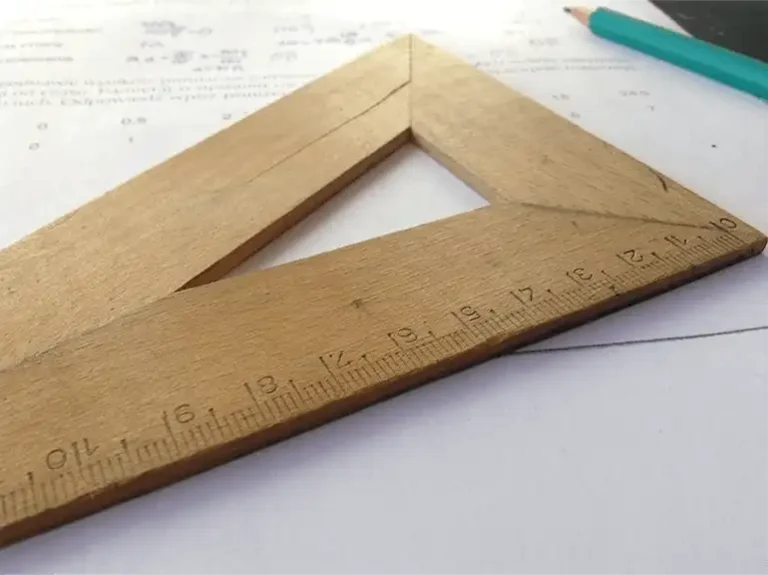How Do Geometry Transformations Work?
Step into the fun and fascinating world of geometry! Unravel the secrets behind lines and angles, and learn how they shape everything around us.

Geometry, the math that deals with points, lines, angles, surfaces, and solids, has been an essential part of human knowledge for thousands of years. However, this can all get a little confusing very quickly since there’s so much to understand.
So today, we’re taking a little breather and heading back to the basics, namely talking about the fundamentals of lines and angles. We’ll explore their different types and classifications, as well as their super cool applications in real life.
Let’s get into it.
A Solid Introduction to Lines & Angles
Lines are like an endless arrangement of points stretching forever without curving or breaking. They form the skeleton for more complex shapes, like the frame for a jigsaw puzzle.
They make up the edges of everything, connect certain points, and can basically be seen as the framework of everything shapes and geometry-related.
Angles are formed when two lines cross each other at a single point, which we call the vertex.
The space between these intersecting lines determines the type of angle created – whether it’s smaller and sharp, like an acute angle, or larger and spread out, like an obtuse angle. These angles play an important role in shaping objects like triangles or polygons.
Learning about lines and angles not only helps you understand geometry better but also sharpens your problem-solving skills for everyday life!
Different Types of Lines: Your Geometry Adventure
In the exciting world of geometry (hey, it actually is), lines come in many forms, offering lots of possibilities for those eager to explore.
One of these possibilities is parallel lines, which are like two perfectly straight railway tracks that run alongside each other forever without ever touching.

On the other hand, perpendicular lines are like two paths that meet at a right angle (90 degrees). They form four equal angles at the point where they cross, just like the four corners of a square.
Understanding these types of lines is key to delving deeper into geometry because they form the skeleton for many shapes and figures.
For example, rectangles and squares are made by connecting two sets of parallel lines perpendicular to each other.
It may seem a little strange to think of lines and shapes in this way, but it’s actually the foundation that’ll unlock much more clarity when understanding more complex shapes and structures!
Recognizing the relationships between parallel and perpendicular lines also helps us understand more complex concepts like transversals and the angles formed by them.
A transversal is a line that cuts through two or more parallel lines, creating several types of angles along its path with unique relationships between their sizes.
Navigating Through the World of Angle Classifications
When you explore the world of angle classifications, you’ll find cool relationships between intersecting lines and their resulting angles. Understanding these fundamental concepts is key to mastering geometry.
By looking at these relationships and using the right measuring techniques, you can figure out loads of useful information about shapes and solve complex geometric problems.
There are many different types of angles in geometry, including:
- Acute angles (smaller than 90 degrees)
- Right angles (precisely 90 degrees)
- Obtuse angles (between 90 and 180 degrees)
- Straight angles (exactly 180 degrees)
- Reflex angles (more than 180 but less than 360 degrees)
- Complete or full rotation, which equals 360 degrees.
When two lines intersect or cross each other at a point, they create four different types of angles:
- Vertical opposite angles – directly opposite each other
- Adjacent angles – share a common side and vertex
- Complementary angles – together make exactly 90°
- Supplementary angles – together make precisely 180°.
These basic angle types help you delve deeper into advanced geometry topics, like polygons or trigonometry.
Real-Life Magic: Lines and Angles in Action
Exploring the real-life applications of lines and angles shows us just how useful these math concepts are in fields like architecture, engineering, and art.
For example, in architecture and civil engineering, right angles ensure that buildings are strong and can resist forces like wind.

Right-angled triangles have special properties that make them really useful when solving problems that involve height or distance measurements.
Also, acute angles are often used in roof designs to help rainwater drain away, while obtuse angles help to distribute weight evenly across a building’s structure.
In mechanical engineering and robotics, angles help understand how things move in circles or how to design gears with specific ratios.
Artists also use angles to create beautiful works of art.
This can be seen in the techniques used by painters from the Renaissance period for creating 3D scenes on flat canvases using lines that converge at vanishing points.
Photographers also use the rule of thirds, dividing their frame into nine equal parts using lines and angles to make sure their pictures are balanced and visually pleasing.
Conclusion
In conclusion, learning about lines and angles in geometry is like opening a magic box of mathematical mysteries.
Understanding these fundamental concepts will help you delve deeper into more complex ideas and applications.
So get ready to explore the various types of lines and angle classifications – they are the building blocks that the awesome world of geometry is built upon!